If you're taking medication for high blood pressure, and you enjoy black licorice candy, herbal teas, or supplements labeled as "licorice root," you might be putting your health at risk-without even realizing it. This isn't just a warning from a cautious doctor. It's a well-documented, clinically proven interaction that can undo the effects of your medication, spike your blood pressure, and even trigger dangerous heart rhythms. The culprit? A compound called glycyrrhizin, found naturally in licorice root.
How Licorice Breaks Your Blood Pressure Medication
Licorice doesn't just "interfere" with your meds. It actively fights them. The active ingredient, glycyrrhizin, breaks down in your body into glycyrrhetinic acid. This compound blocks an enzyme in your kidneys called 11β-HSD2. Normally, this enzyme protects your body from cortisol-a stress hormone that acts like a weak version of aldosterone, the hormone that tells your kidneys to hold onto salt and water. When 11β-HSD2 is blocked, cortisol takes over. Your kidneys start behaving as if they're flooded with aldosterone. Result? You retain sodium. You hold onto water. You lose potassium. Blood volume goes up. Blood pressure spikes. All of this happens even if you're taking ACE inhibitors, diuretics, beta-blockers, or calcium channel blockers. Your medication is working, but licorice is undoing it. This isn't theoretical. A 2019 meta-analysis of 26 studies found that people consuming licorice regularly saw an average systolic blood pressure increase of 5.45 mmHg and a diastolic rise of 1.74-3.19 mmHg. That might sound small, but in someone with uncontrolled hypertension, it's enough to push them into dangerous territory.Who’s at the Highest Risk?
Not everyone reacts the same way. Some people can eat a small piece of licorice candy without issue. Others-especially those already on blood pressure meds-can develop serious problems from just a few grams a day. The highest-risk groups include:- People over 60 years old
- Women, particularly post-menopausal
- Anyone with existing high blood pressure
- Those taking diuretics like hydrochlorothiazide
- Patients on digoxin (Lanoxin) for heart rhythm issues
The Dangerous Combo: Licorice + Digoxin
One of the most life-threatening interactions isn’t with blood pressure meds directly-it’s with digoxin. Digoxin helps control irregular heartbeats, but it has a very narrow safety margin. Potassium keeps digoxin from binding too tightly to heart cells. When licorice drops your potassium levels (which it does, often by 0.5-1.0 mmol/L), digoxin binds more aggressively. That can lead to digoxin toxicity. A documented case in the journal Cardiology involved an elderly man who started using a herbal laxative containing licorice. Within weeks, he developed congestive heart failure and severe arrhythmias. His potassium level had dropped to 2.8 mmol/L (normal is 3.5-5.0). His digoxin level spiked. He nearly died. This isn’t rare. It’s a textbook example of how a "natural" supplement can have deadly consequences when mixed with prescription drugs.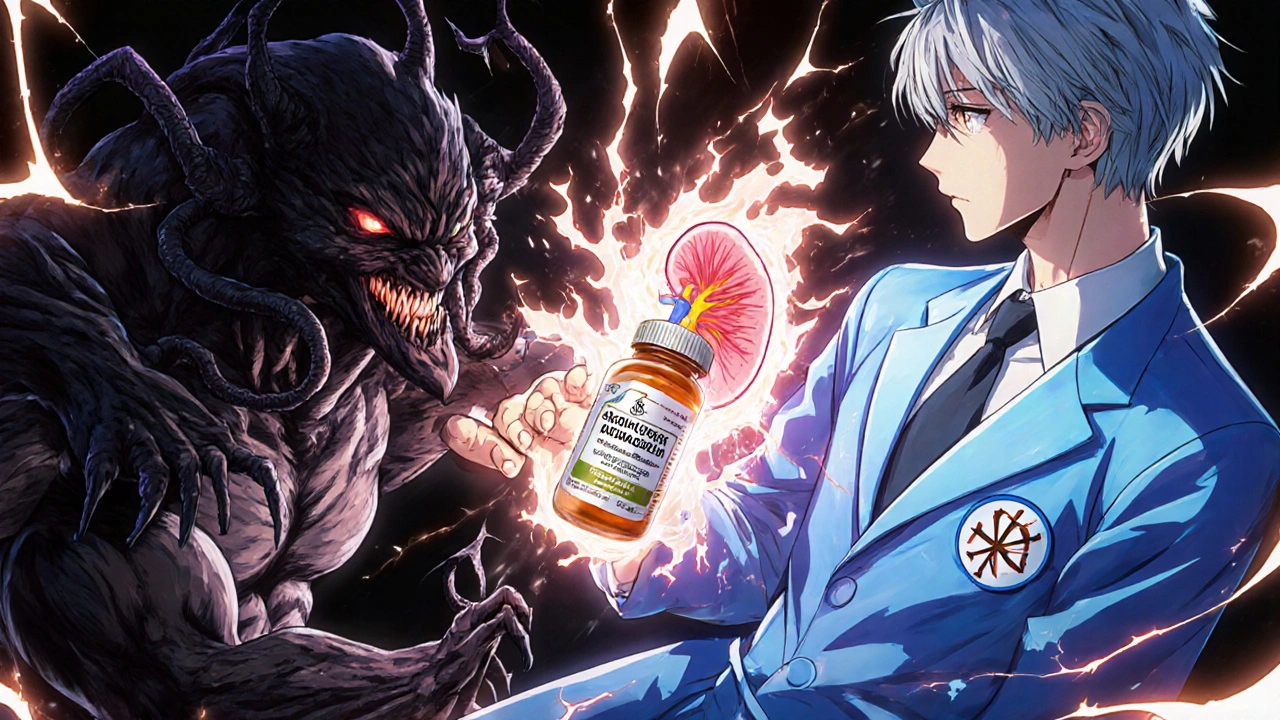
What Counts as Too Much Licorice?
There’s a clear threshold: 100 mg of glycyrrhizin per day. That’s the level where clinical effects become likely, according to Medsafe (New Zealand’s medicines regulator) and the Merck Manual. But here’s the catch-you won’t find this number on any candy label. So how much licorice is that?- 60-70 grams of traditional black licorice candy
- About 2.1-2.5 ounces
- 1-2 cups of licorice root tea (depending on strength)
- Any herbal supplement with "licorice root" listed as an ingredient
What to Watch For: Symptoms of Trouble
If you’ve been eating licorice regularly and are on blood pressure meds, pay attention to these signs:- Unexplained rise in blood pressure (even if you’ve been taking meds consistently)
- Swelling in your ankles or feet (edema)
- Muscle weakness or cramps
- Fatigue or lethargy
- Irregular heartbeat or palpitations
- Feeling unusually tired or weak
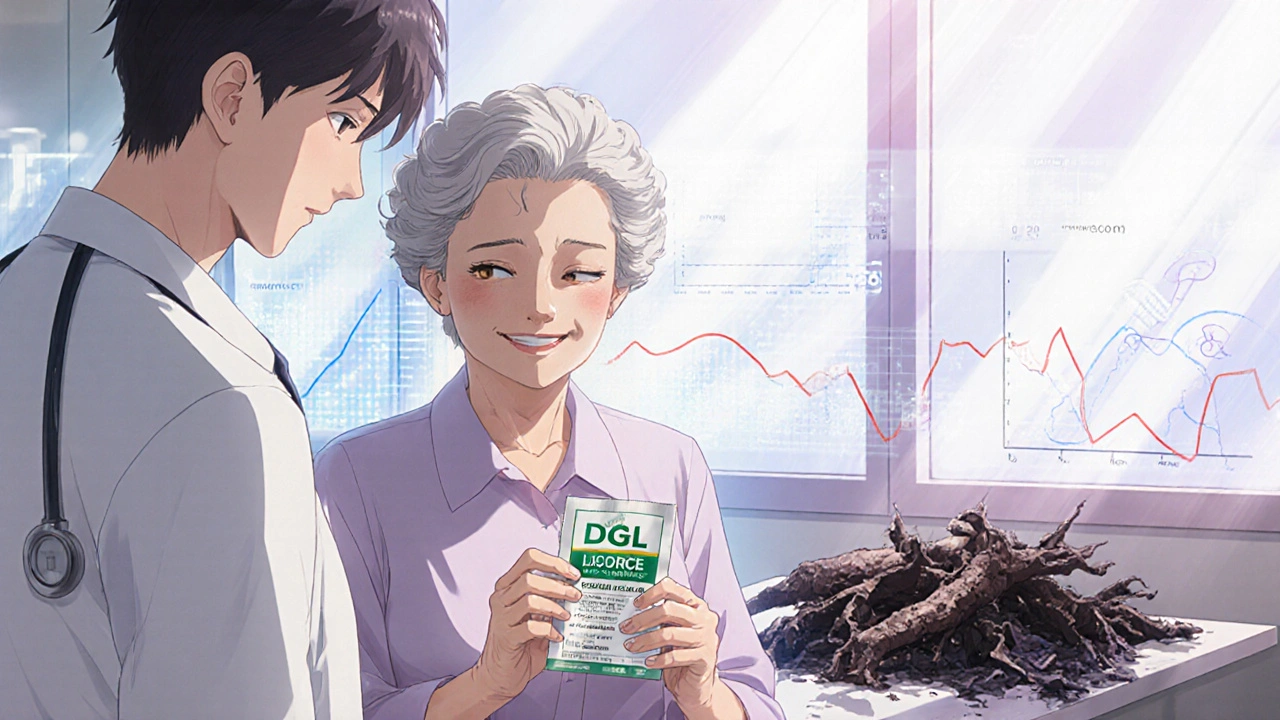
What About Licorice Supplements?
Supplements are the biggest hidden danger. Unlike food, they’re not required to list glycyrrhizin content. A single capsule might contain 200 mg or more. You could be consuming triple the safe limit without knowing it. Many herbal formulas for digestion, adrenal support, or "detox" include licorice root. It’s popular because it tastes sweet and feels soothing. But if you have high blood pressure-or are on any medication for it-avoid these entirely.What Can You Do?
You don’t have to give up all sweetness. Here’s what actually works:- Read labels. Look for "glycyrrhiza glabra," "licorice root," or "licorice extract." Avoid anything with it if you’re on blood pressure meds.
- Switch to deglycyrrhizinated licorice (DGL). This version has the glycyrrhizin removed. It’s used for heartburn and stomach issues and is safe for people on blood pressure meds.
- Ask your pharmacist. If you’re taking a supplement, bring it in and ask: "Does this contain glycyrrhizin?" Most pharmacists know this interaction.
- Get tested. If you’ve been consuming licorice and have high blood pressure, ask your doctor for a serum potassium test and a cortisol:cortisone ratio test. These can confirm if licorice is the cause.
- Be honest with your doctor. Don’t assume they know you’re eating licorice. Many patients don’t think of candy or tea as "medications"-but they absolutely are, in this case.
What’s the Bottom Line?
Licorice isn’t just a sweet treat. For people on blood pressure medication, it’s a hidden threat. The science is clear: glycyrrhizin raises blood pressure, lowers potassium, and can make your meds useless-or worse, dangerous. There’s no safe gray area if you’re hypertensive or taking digoxin. The threshold is 100 mg of glycyrrhizin per day, and many products exceed that without warning. If you’re taking medication for high blood pressure, skip the black licorice candy. Avoid licorice root teas. Skip herbal supplements with licorice unless they’re labeled "DGL." Your heart and your meds will thank you.Can I eat licorice if I’m on blood pressure medication?
No, if you’re on blood pressure medication, you should avoid licorice root and products containing glycyrrhizin. Even small amounts can raise your blood pressure and lower your potassium, making your medication less effective. The risk increases with age, in women, and if you’re already taking diuretics or digoxin.
How much licorice is dangerous?
Consuming more than 100 mg of glycyrrhizin per day is considered risky and can cause measurable increases in blood pressure and drops in potassium. That’s roughly 60-70 grams (2-2.5 ounces) of traditional black licorice candy. Some herbal teas or supplements can contain much more per serving.
Is red licorice safe?
Most red licorice in the U.S. and Australia doesn’t contain real licorice root-it’s flavored with anise or artificial flavors. Check the ingredient list. If it says "licorice extract" or "glycyrrhiza glabra," avoid it. If it just says "artificial flavor," it’s likely safe.
What about DGL licorice?
DGL (deglycyrrhizinated licorice) has the glycyrrhizin removed, so it doesn’t affect blood pressure or potassium. It’s commonly used for stomach issues like heartburn and ulcers and is considered safe for people on blood pressure medications.
Can licorice cause heart failure?
Yes, in rare cases. When combined with digoxin and low potassium levels, licorice can trigger digoxin toxicity, leading to irregular heart rhythms, fluid buildup, and congestive heart failure. There are documented cases where people developed heart failure after using licorice-containing herbal laxatives or supplements.
Should I stop licorice if my blood pressure is high?
Yes, immediately. If your blood pressure is high and you’re consuming licorice, stop it right away. Unexplained high blood pressure despite taking meds is a red flag. Get your potassium checked and talk to your doctor about whether licorice could be the cause.
Are there any blood pressure meds that are safe with licorice?
No. All classes of blood pressure medication-ACE inhibitors, diuretics, beta-blockers, calcium channel blockers-are affected. Licorice works by changing how your kidneys handle salt and water, which counteracts the goal of every antihypertensive drug. No exception exists.
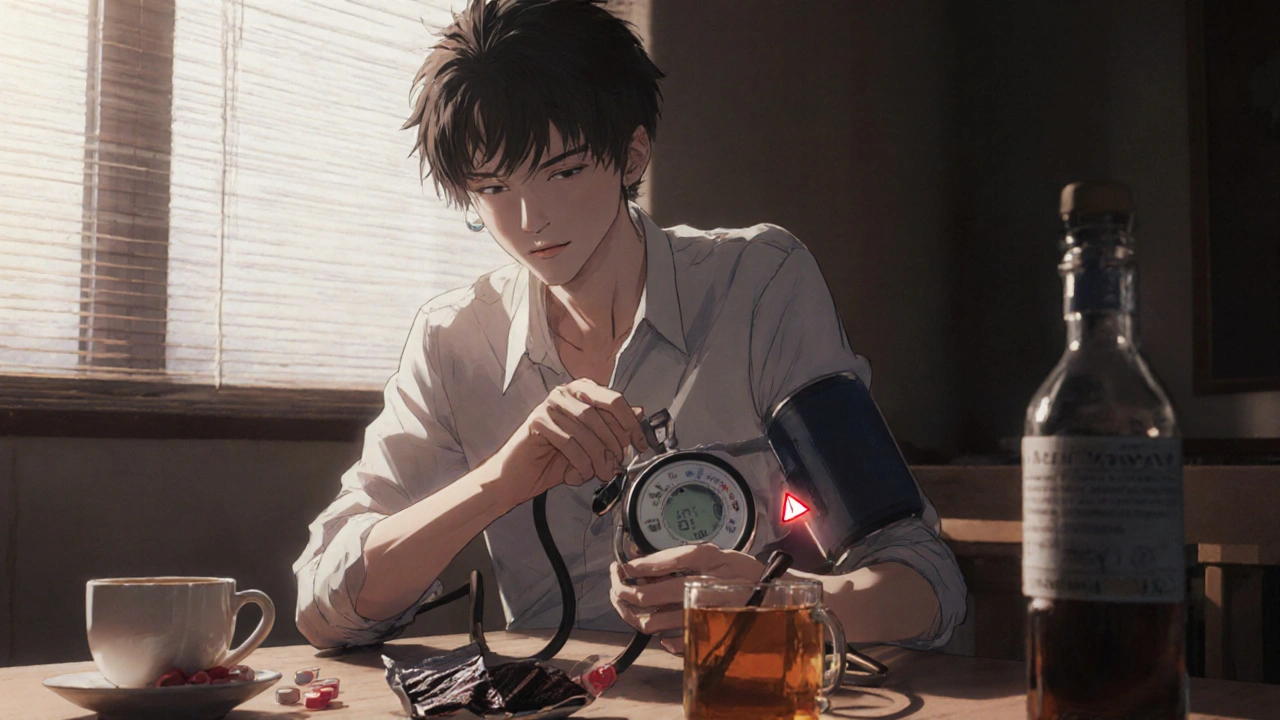
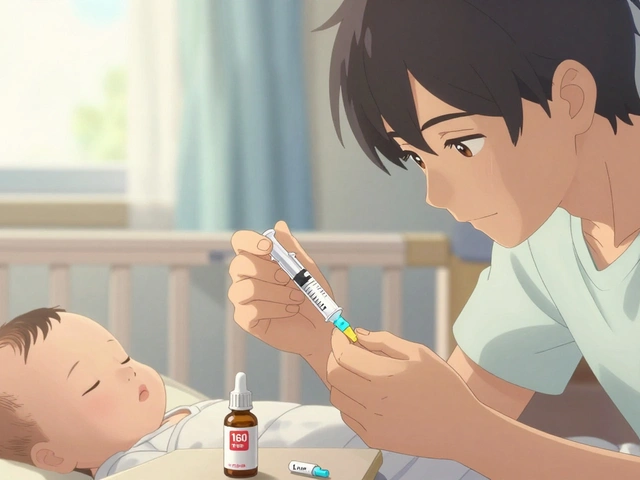
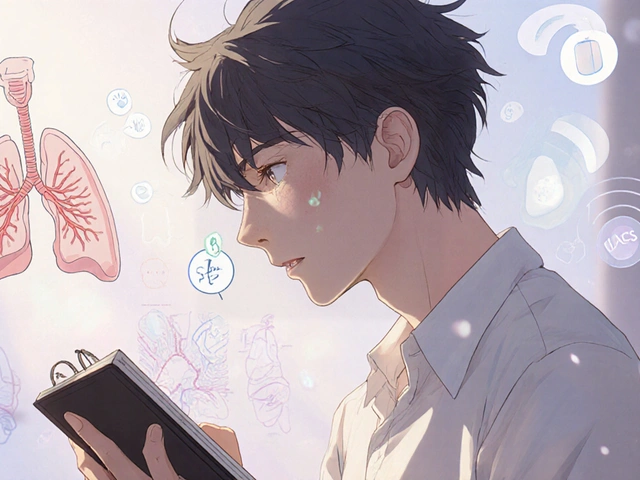


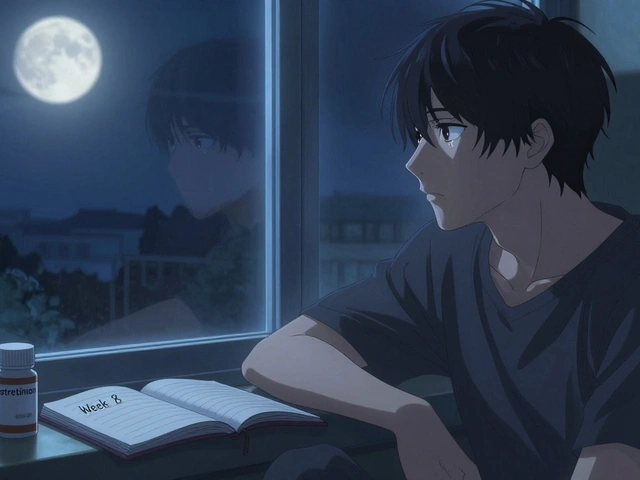

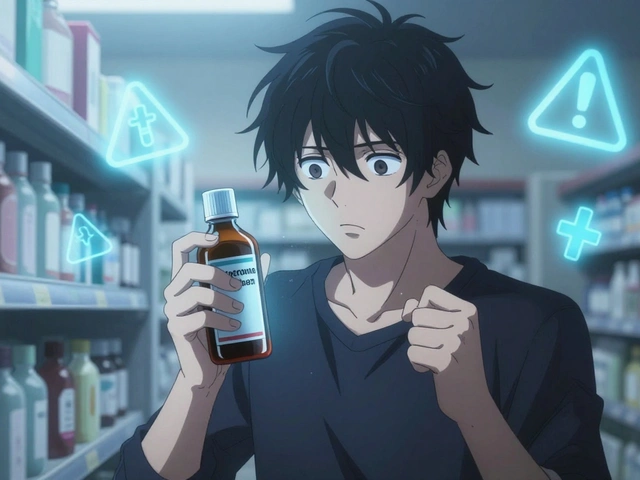
Conor McNamara
i read this and immediately thought about that guy at work who drinks licorice tea every morning 'for digestion'... he's been on lisinopril for 3 years and his bp keeps spiking. no one connects the dots. maybe it's not the meds, maybe it's the tea. i told him once, he called me a fearmonger. lol.
Leilani O'Neill
This is exactly why I stopped trusting 'natural' remedies. The pharmaceutical industry doesn't want you to know that a candy bar can sabotage your treatment, but the science is undeniable. People think 'herbal' means 'safe'-that's not just ignorance, it's dangerous.
Riohlo (Or Rio) Marie
Let’s be real: if you’re consuming glycyrrhizin without knowing the exact milligram content, you’re not 'being natural'-you’re playing Russian roulette with your electrolytes. The fact that supplements aren’t required to label glycyrrhizin is a regulatory failure of epic proportions. Someone’s going to die because a 'wellness' brand thought 'licorice root' sounded soothing.
steffi walsh
I used to love licorice root tea until my mom had a scary episode last year-low potassium, dizzy, heart racing. She cut it out and her numbers stabilized in weeks. So grateful for this post. If you're on meds, please listen. Your body isn't lying.
Hal Nicholas
You think this is new? The FDA knew about this in the 80s. They buried it because Big Pharma doesn't want people questioning their meds. Look up the 1987 NIH report on licorice and hypertension. It’s still in the archives. They don’t want you to know.
Louie Amour
I’ve been telling my patients this for years. If they’re on diuretics and still have edema? Check their candy drawer. One woman was eating 100g of licorice a day thinking it was 'good for her gut.' She had a near-fatal arrhythmia. Stop being naive. This isn’t 'alternative medicine'-it’s pharmacology you didn’t learn in high school.
Kristina Williams
my cousin died from this. she was on blood pressure meds and took 'herbal stress relief' pills. turned out they had licorice root. potassium dropped to 2.1. heart stopped. no one told her. no one even asked if she took supplements. now i check every bottle i bring home.
Emanuel Jalba
I just deleted every licorice product from my cart. 😭 I thought I was being healthy with that 'adrenal support' tea. Turns out I was slowly poisoning myself. This post saved my life. THANK YOU. 🙏❤️
Heidi R
DGL is the only safe option. Everything else is a gamble.